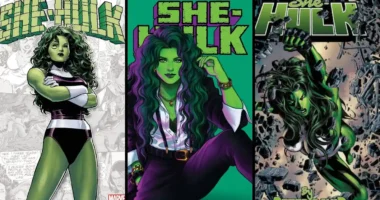How to Write a Series That is Captivating: Different writers experience various feelings when they hear the word “series”. The idea of spending numerous books investigating the world and the narrative they have built can make some people grin. Some people would clap their hands in excitement at the possible financial advantages of a long-running series. No matter which of these camps you belong to, the series as a literary idea is unquestionably here to stay. Writers of many genres and styles, including Arthur Conan Doyle, Enid Blyton, Agatha Christie, J. K. Rowling, Terry Pratchett, and Patricia Cornwell, have adapted the series to work for them. Learn how to write a series if you want to succeed. This is because you’ll have a captive, invested readership after book one has readers captivated and they know that books two, three and four are on the way. You may create an engaging, compelling multi-novel plot arc by using these 10 series writing tips.
How to Write a Series That is Captivating
Know what makes writing series different
For a variety of reasons, writing a series differs from writing a solitary book: which are as follows:
- A book series differs from a book cycle in that characters, locales, or conflicts recur in multiple novels.
- Longer-term, series-wide developments frequently don’t occur in shorter works with the same level of intricacy or detail (for example, a villain’s increasing strength).
- Since there is typically a gap between volumes in a series such as when fans realized how far J.K. Rowling had written the Harry Potter books. It is even more crucial to keep readers interested from book to book.
Choose a central conflict that sustains interest in your series
From Rowling’s fantasy epic Harry Potter to Louise Penny’s Chief Inspector Gamache mystery series, compelling series have conflicts and characters whose growth spans numerous books. The fundamental tension or unknowable that needs to be resolved is your series’ central premise or conflict. The main conflict in Harry Potter is the protagonist’s unresolved issue with the antagonist, who is initially introduced as “he who must not be named.” Great series conflicts usually hint at future subplots. Along with the main antagonist, Rowling’s series also features henchmen and sympathizers who operate both openly and covertly.
Each book advances toward a greater or primary conflict through these supporting conflicts. A nasty and vengeful teacher appears as a minor antagonist in one of Rowling’s books, but an encounter with the major antagonist is imminent. With this kind of architecture, each book has its own, unique challenge and potential for character development, leaving more significant unanswered questions in the novels. Create a gripping central conflict for your series, whether it is an impending clash with a villain or a barrier standing in the way of a character’s ultimate romantic fulfilment in a romance series. You can create a strong central conflict in the following ways::
- Set up supplementary roadblocks that prevent your main character from achieving their goals and lead back to the primary conflict. For instance, secondary conflicts (resulting in curfews, invasions, or injuries) are extra obstacles that delay the main resolution if a couple’s conflict is the distance brought on by war.
- Make these challenges into side stories that offer more gradual increases and decreases in tale tension, keeping the remainder of each book intriguing.
- As your characters work to accomplish their objectives, take them through various situations. Make sure that every situation offers its own unique challenges, surprises, and interests.

Create fictional world readers will long to return to:
Rowling’s fantasy series readers are anxious to visit her made-up world because:
- It is full of creative details: From the way bank vaults are guarded by dragons to the kind of wood used to produce magical wands and their characteristics, Rowling considers every little detail.
- Her world is different from ours, but it is nonetheless familiar: Rowling shows alternative organizations like the “Ministry of Magic while also deliberately contrasting the laws and customs of the wizarding realm.
- Her locations are recognizable: from the magic school to the Weasleys’ run-down home, each has its own characters, surprises, wonders, and solaces.
- Writing a series allows you to create a singular, magical, or odd world (like Sir Terry Pratchett’s Discworld) that is populated by fascinating people and practices.
Outline your series in advance
If you don’t often plot, this may still work for a novel. But an outline can be especially helpful when writing a novel series since it keeps you from losing perspective. You comprehend how each book ties into the overall plot arc as well as how each book works individually. An organized structure will help you keep track of what happens when you are juggling many subplots across multiple volumes. Your outline will act as a road map to help you finish writing your book.

Establish central characters early but reveal their backstories gradually
In order for your reader to become invested in the character arcs of your series characters, it’s crucial to introduce them early on. Create your characters early so that readers are aware of who the main characters in your series are. The purpose of your story is determined by your characters. However, the ‘why’ behind their goals can be slowly uncovered. You can explain why your characters have the objectives they have by using both primary events such as encounters between your main character and an antagonist) and subplots. Your characters and readers will be able to maintain some secrets and unknowns thanks to this method of revelation. As a result, there will be more to learn and discover in sequels, increasing their natural intrigue.
Introduce new characters to keep your series moving
J.K. Rowling introduces vital new characters in each Harry Potter book, which is one of her talents. In the first volume, readers get to know significant people they will love and hate. However, sequels feature key characters for the first time. Love interests, minor to major villains, new guardians, and long-lost relatives are all present. This is a crucial component of writing a series: Make the little characters matter. Adding a walk-on character is not a good idea if you are unsure of how to go on to the following scene. Show how each new supporting character helps or hinders your primary character instead.
For instance, J.K. Rowling doesn’t introduce the cruel teacher Dolores Umbridge in Harry Potter until the fifth book. She nevertheless has a strong personality and is a villain in her own right. She also includes a side table that heightens the suspense that drives the main plot. Your primary characters need to be very compelling. pique readers’ interest in further details about their present or past experiences:

Give each character a longer developmental arc
To ensure that your series’ character arcs are satisfying:
- Give recurring characters flaws they either slowly overcome or continually succumb to.
- Display the effects of alterations to your characters’ surroundings. While a hobbit in the Shire lives comfortably, a hobbit thrust into the perilous world of Mordor may exhibit unexpected bravery.
- Make a list of potential changes for each character to undergo from one book to the next: For instance, in “Book One,” a character unexpectedly inherits a sizable sum. Book two: The character loses everything but grows more haughty. Third book: Character rebuilds and discovers new values.
Give each book in your series a strong central event
Keep in mind that each book should be able to some extent stand alone. Starting with book 4 should allow a reader to get into the plot without being utterly lost. For each book in your series to succeed as a stand-alone piece: Each book should have a compelling central theme and image. The discovery of a portal to another realm in the back of an old wardrobe serves as the key event and inspiration for C.S. Lewis’ fantasy tale The Lion, the Witch, and the Wardrobe. For each book in the series, create a secondary conflict and at least partial resolution: A smaller rise and fall that is a scaled-down variation of the series’ greater rising and falling movement.

Make your middle books’ subplots count
Make sure the middle books demonstrate character growth by demonstrating to the reader how the major characters learn the ability, conviction, or tactic they need to accomplish their goals Create tension to make goals appear further away than they are: Uncertainty and unknowns pique our curiosity about what will happen next. Also in the middle novels in your series try to have their own distinct storylines, but also make good use of them to highlight crucial information about your characters, their backstories, and their difficulties. Your series will gain depth as a result.
Tie it all together and create compelling titles for each book and the series as a whole
Make sure the final book in your series has a satisfactory finale by:
- Every significant conflict and plot arc is resolved.
- Utilizes language that suggests a conclusion, such as a language that is emotionally charged and implies finality.
- Relates to earlier events: You can go back and start the story at the beginning of the first book in the series if you want to.
Also Read: Love Interests of She-Hulk in Marvel Comics





